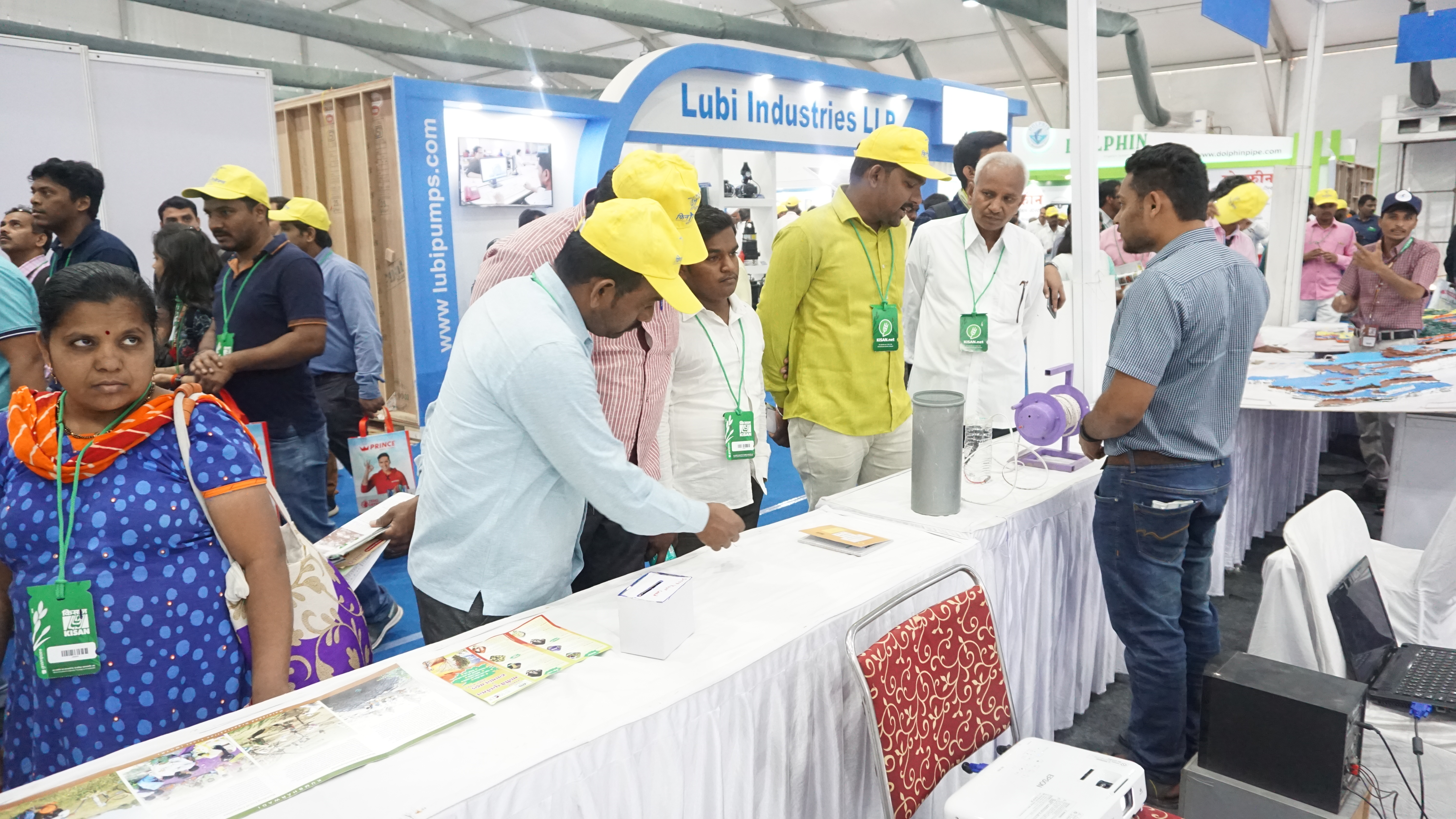By Aditya Shinde
Expos and exhibitions are events organized with the aim of creating awareness among the public, providing a platform to companies to showcase their wares and sharing new ideas. The recent KISAN Agri Exhibition held in Pune was no exception. KISAN is a national-level exhibition held annually in different parts of the country. The main objective of the expo was to keep farmers in India abreast of the latest developments in agricultural technologies. It was held at the Pune International Exhibition and Convention Centre, Moshi.
It is worthwhile to note in this context, that agriculture is still the largest employer in India, especially in rural areas. Considering the importance of agriculture, it is important that farmers are exposed to new developments and products that could make farming more productive, profitable and environmentally friendly. This is where expos like KISAN play a major role. Watershed Organisation Trust (WOTR) had put up stalls at the exhibition to showcase our work in areas like watershed development, water stewardship, and sustainable agriculture practices.

WOTR staffer Nikhil Nikam explaining to visitors how water levels are measured in wells, with the help of a water-level indicator (the purple object on the right). Photo: WOTR
Visitors to the expo came from different backgrounds including farmers, businessman, agriculture investors, government officials and employees of non – governmental organizations working in the agriculture sector, policy makers, corporates, students, and university staff. An estimated over 50,000 people visited the WOTR stall over the 5 days of the exhibition. A brief description of the different sections and our outreach to visitors is given below.
- Watershed Development Section
In the watershed development section, WOTR staff briefed visitors about the ridge to valley intervention that had been carried out for watershed development. Visitors expressed interest in the watershed development program and the beneficial impacts it had on agriculture. Of particular interest to them was the example of Darewadi village, where watershed development had been taken up under the Indo-German Watershed Development Program. The transformation of Darewadi, a village in the Sangamner taluka of Ahmednagar was shown to visitors through a video. Visitors unanimously expressed the opinion that this kind of change required unity, which was often lacking in rural communities.
- Water Stewardship Initiative
A second aspect showcased was the Water Stewardship Initiative, currently operational in 106 villages of Maharashtra and Telangana. The aim of WSI is to have better management and planning of water resources. Due to the decline of traditional knowledge and local water governance practices, rural communities are facing problems like water scarcity and crop loss. Hence, it is necessary to equip villages with knowledge and tools to make informed decisions at the farm, enterprise, and community levels that enhance resilience and adaptive capacities. The main attraction of that stall was the 3D model of Kumbharwadi village, thus enabling people to visualize the surface and subsurface of the village and understand the availability of groundwater. Besides this, the concept of groundwater level indicators and a manual rainfall gauge was shown and explained.

WOTR staffer Arun Dahale explaining the concept of the Water Stewardship Initiative to visitors. Photo: WOTR
- Agriculture Section
In today’s era, climate variability is affecting every sector, in particular agriculture. WOTR’s Agromet advisories are one tool to help counteract the effects of this variability by providing farmers weather and crop-based advisories so that they can plan their farming. Visitors, especially farmers and those engaged in agricultural and environmental research were interested in designing and implementing agro met advisories for their own villages. We observed that many women farmers were interested to know about our organic farming and livestock practices while children showed a lot of interest in our Children’s Biodiversity Register.
Visitors appreciated WOTR’s work and expressed the desire for collaboration in their own native villages. It was a matter of pride for WOTR when one visitor stated he would like to come to WOTR’s office and meet our founders, as a token of appreciation for the work that was done over the last 25 years.

WOTR staffers Prithviraj Gaikwad (right) and Pradnya Thombare explaining the agromet advisory system to farmers. Photo: WOTR

A young visitor tries to understand the participatory 3D model of mapping groundwater resources, using the CoDriVE – Visual Integrator (Co-DriVE-VI). Photo: WOTR
On the whole, during the course of the exhibition, we observed that farmers were looking for new technologies and methods to improve agriculture productivity and for sustainable development. While expos such as KISAN play a major role in education, awareness creation and cooperation, the real effects will only come through when there are the behavioral changes among the communities. Communities must learn to manage water resources more effectively and promote sustainable agricultural practices. WOTR, in all its interventions, is working towards precisely those behavioral changes. This is the way to ensure that expos like KISAN have a lasting impact in the times to come.





